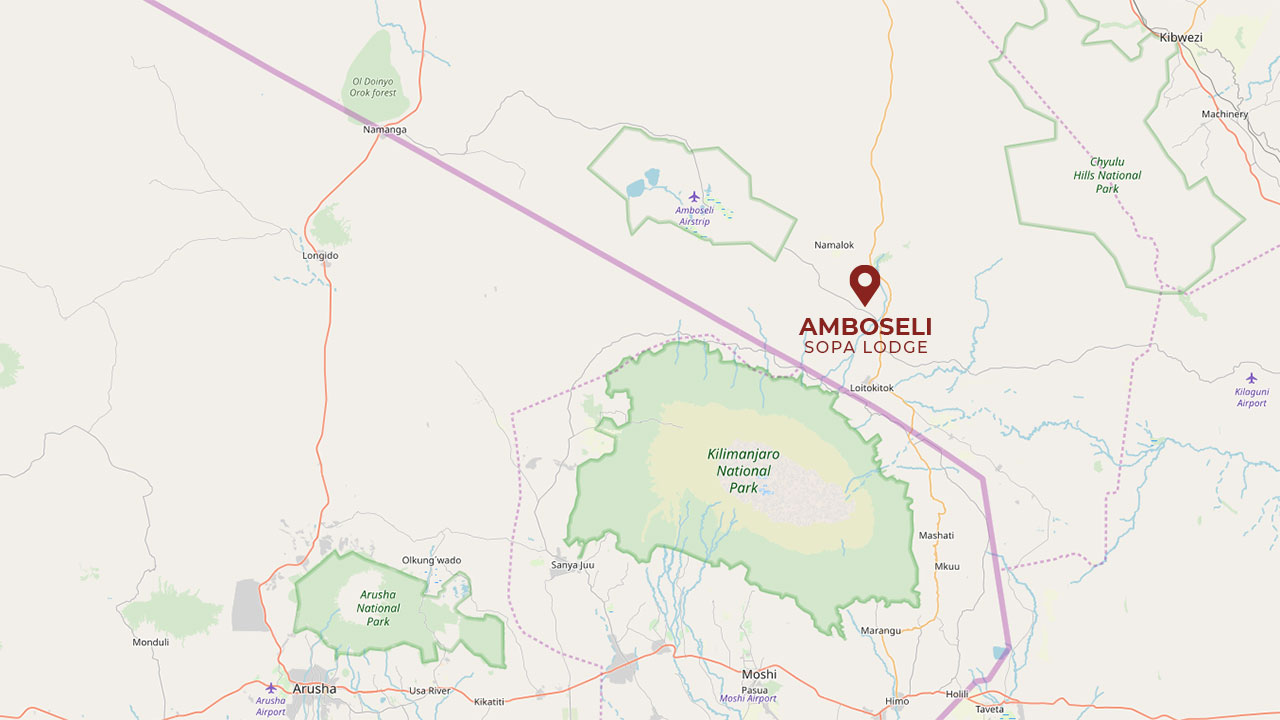Getting There
- 250kms from Nairobi on a paved road except for the last 4kms of all-weather murram, the journey takes between 3 and 4 hours.
- Flying from Nairobi takes approximately 40 minutes, and it is an hour’s transfer time from the airstrip to the lodge.

Amboseli National Park
The Amboseli National Park’s ecosystem is mainly savannah grassland spread across the Kenya-Tanzania border, and also comprises of forested areas around some of its rivers and lakes. The park is famous for being the best place in Africa to get close to free-ranging elephants among other wildlife species, and its other attractions include opportunities to meet the Maasai tribe’s people, and its spectacular views of Mount Kilimanjaro.
With all this and more to see in the park, you might decide to spend a full day there instead of returning to our lodge for lunch. Should this be the case, and for your convenience, we have a tented luncheon and bar venue within a five minute drive from the park gates.
Facts about Amboseli National Park
Size / Location:
- 390.26 Km2
- Loitoktok District, Rift Valley Province
Major Attractions
- Mt. Kilimanjaro
- Large herds of Elephants
- The Big Five
- Observation Hill which allows an overall view of the whole park, especially that of the swamps and elephants,
- The swamp below Observation Hill hosts many elephants, buffaloes, hippos and a variety of water birds like pelicans and Egyptian geese
- Contemporary Maasai culture and indigenous lifestyle
Wildlife:
- Leopard, Cheetah, Wild dogs, Buffalo, Rhino, Elephant, Giraffe, Zebra, Lion, Plains Game, Crocodile, Mongoose, Hyrax, Dik- dik, Lesser Kudu, and Nocturnal Porcupine
- Prolific birdlife features 600 species
For more information please visit Kenya Wildlife Service
